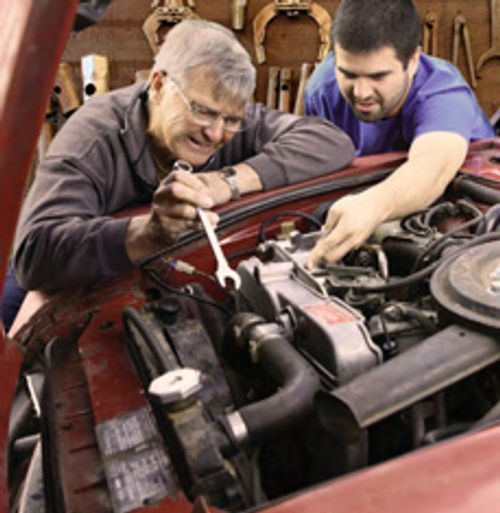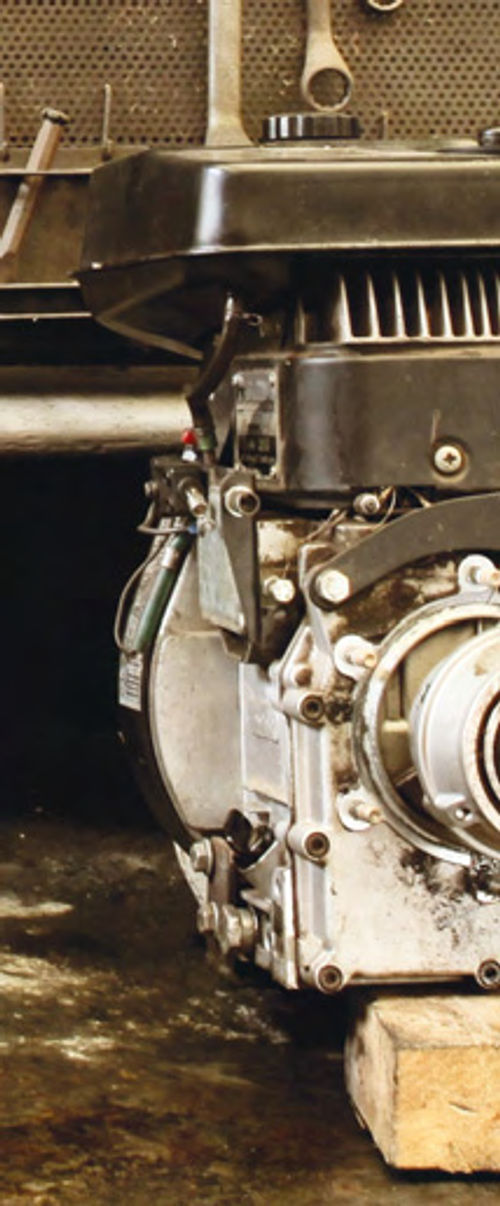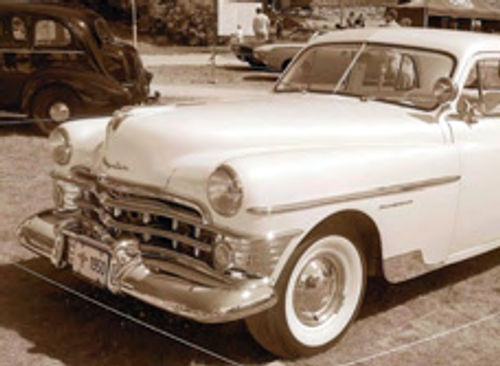How -to A Thoroughly Modern ’30s Sedan
The Owner Likes to Make Long Trips In His 79-Year-Old Car. So, He Added a GPS Unit…and a Few Other Items.
WAS IN for a surprise as I climbed aboard a 1925 Willys-Knight Sedan after the owner offered to take me for a drive during a marque club meet. There, sitting on the dashboard, was a Global Positioning System (GPS) unit. “It’s a Garmin GPS 260,” said Stu Etheridge, the car’s owner. “We attach it by suction cup to the windshield.”
Etheridge said he likes the GPS, especially because it provides accurate speed and mileage driven readouts.
Etheridge said that to power the Garmin 260 he uses a 12-volt dry cell battery normally used for electric fences. The battery has to be charged occasionally. He made a pigtail to run from the battery to the GPS with a cigarette lighter adaptor.
When I asked to take some photos of the car, the owner easily removed the GPS in a minute, so the car looked original. I shot my photos and left.
It wasn’t until later that I realized I had missed the “big story” of the day. While a feature on a Willys-Knight would make good reading, the ease of installing and using a GPS in an old car is probably of more interest to today’s hobbyist. In fact, I immediately thought of how a GPS would compensate for the way the speedometers tend to act up in some of my old cars.
When driving down the highway, for instance, the speedometer in my 1954 MG TF constantly swings back and forth. When people ask how fast the car goes, Isay, “Oh,it’s good for 50-70mph.”Actually, it has a top speed of about 60 mph. In my 1948 Pontiac, the speedometer is an electromagnetic unit. As the car gets going and the magnetic field builds up, the needle jumps up to 95 mph, although the car is doing 65 at most. It would be so nice to know how fast I’m really going and a GPS unit would report that.
Another Willys-Knight With a GPS
Afterward, while speaking with the owner of a 1931 Willys-Knight sedan, I learned that he also had a GPS unit in his car.
But when I arrived to take photos of it, I discovered that in addition to the GPS, this original-looking, 79-year-old car had a lot of other modern touches that might be of interest to Auto Restorer readers.
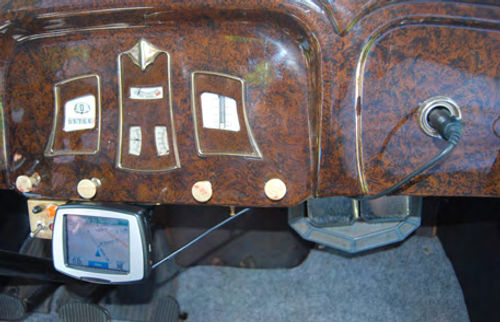
So when the owner, Lloyd Gauerke, suggested that we go for a drive in his car, I wasn’t about to hesitate. And what a great car it is to take down the road. At first glance, it looks like a factory-fresh 1931 Willys-Knight, but then you notice that the car has seat belts. Lloyd has the belts attached to a chain that is bolted to the frame of the car.
The Willys-Knight moved smoothly down the road and shifted like a modern vehicle. Lloyd then set the GPS to take us back to his home and voice commands from the Garmin 260 called out each turn. Toward the end of the test drive, Lloyd told me to purposely drive past a turn that the Garmin had suggested. The unit immediately recalculated our position and issued commands to correct the error. In a few minutes, we were back at the Gauerke home to talk about Lloyd’s updated and very drivable Willys-Knight. Here’s what he had to say:
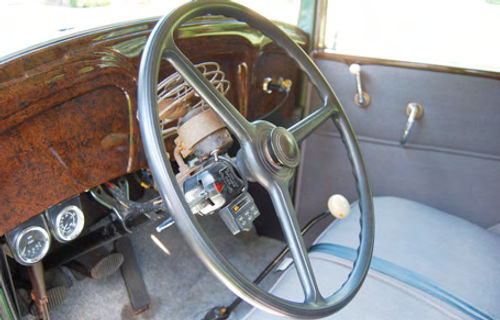
Q. So tell me about your car. How did you happen to put a GPS in there?
A. It’s a 1931 Willys-Knight Model 66D. The GPS is just on a piece of sheet metal screwed to the bottom of the dash so it’s out of the way and it’s got a suction cup that holds it on so I can take it out when I don’t really need it. And it plugs into the original cigarette lighter because I converted the car to 12 volts. But some people just use a little battery—a booster battery—to power it or the Garmin will run up to eight hours on its own battery, so you can go anywhere you want and charge it up.
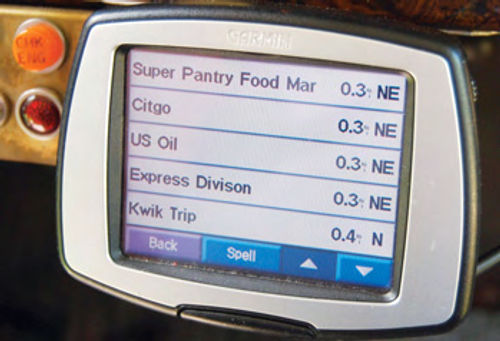
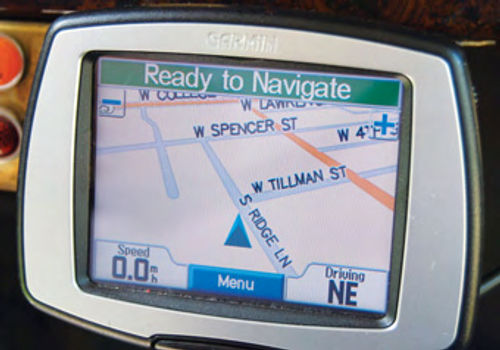
Q. How were you introduced to GPS systems?
A. My neighbor had one in his motor home. He was real happy with it so I borrowed it to make sure it would work in my vehicle. You know you don’t have a shielded ignition in these old cars and I needed to be sure.
Q. You mount your GPS with a suction cup. Are you satisfied with that setup?
A. The suction cup actually holds it very well.
Q. In addition to the GPS, what other modifications have you made?
A. It’s got a 1955 Chevy six-cylinder engine with a 1985 S-10 pickup five speed transmission behind it. My first thought was the 1955 Chevy engine because I had one laying around here. Then I looked at the two engines side by side. The exhaust, the water pump and everything else were in the exact same place on the Willys engine. The Chevy engine is smaller in physical size, so there was lots of room for it under the hood. And I made a Willys nameplate for the valve cover to make it look good. The Chevy engine bolted right in, so things can be put back to original. But this way it’s a nice cruising car, especially with the five-speed. Seventy-five miles per hour is about top speed, but it will run 60-65 all day long.
Q. Did you add the turn signals and why does it have a check engine light?
A. I put in signal lights with a Spartan switch.As Far as the check engine light,just for the heck of it, I put throttle body injection on the Chevy six, even though the original carburetor worked real well. I installed an electric fuel pump back by the gas tank because I was having vapor lock problems when it got to be 100 degrees.
Q. Do the modern components make the car more fun to drive?
A. Yes. For example, I put in cruise control because we like to take the Willys-Knight on long trips. Overall, we put about 3000 to 5000 miles on the car per year. It has been to Mount Rushmore (South Dakota), Nashville, Indianapolis and Detroit. We go all over in it, so having cruise control is nice. It also has power steering. I put a Jeep Wrangler sway bar in back and also put Chevy Venture van air shocks in the back.
Q. The trunk on the back hides the gas filler. Isn’t that a problem when it comes time for refueling?
A. In the old days people only used a trunk when they were making long trips, but I leave it on all the time. And yes, that makes it really hard to reach the gas filler, so I put the trunk on cabinet slides. That way I can push it back about six inches when it’s time to pump some gas.
Q. How did you find and buy your car?
A. I bought it about seven years ago in Green Bay, Wisconsin. A person told me this car was on eBay and I went up to look at it and made an offer. The owner said he was going to wait and see what it brought on eBay. I never heard back from him, so I figured it had sold to someone else. A year later, I was up in Green Bay and stopped by and asked the guy if he still had the car. He said yeah and that he had lost my phone number and that’s why he didn’t call me back. He said he had put my phone number on an old refrigerator. When he bought a new one he had the old one hauled away and never thought to save my number. So I bought the car a year later than I had planned, hauled it home and did a lot of work to get it running.
Q. What work did the car need?
A. The interior was really bad, the fabric roof insert was shot and a lot of the structural wood was gone. It had been kept outside for about seven years and the old tops can’t take that kind of storage any more. The paint (applied in the 1980s) was about what it is now and so was the chrome, but it needed mechanical repair. The exhaust manifold was cracked, the brakes didn’t work very well, the water pump leaked, the lights didn’t work and a whole lot of little stuff was wrong.
Q. How long did the restoration take?
A. I bought it in July and drove it to Holcomb, Wisconsin—that’s way on the west side of the state—in September. So, it didn’t take that long. But, of course, it’s still an ongoing project.
Q. How much did your car cost new?
A. That one cost $1195, but the year before, in 1930, the same car was a lot fancier and cost $1985. They took $800 out of it to keep sales going in the Great Depression. The Willys-Knight was made in the Willys-Overland factory in Toledo, Ohio. In fact, up until a few years ago, some parts of the same factory were still being used to build cars.
Q. Your car originally came with a Knight Sleeve-Valve engine. Was That a European invention? (A sleeve-valve engine, such as the Knight, has no poppet valves for the inlet or exhaust functions. Instead, it has a sleeve or sleeves, there are two in the Knight engine, that move up and down and are designed to align openings in the sleeves with the intake and exhaust ports at the correct times in the four-stroke cycle. So, there were no valve springs to weaken under load and heat, and the engine is quiet and smooth. In fact, it’s said that Charles Knight went to work designing his engine after he bought a car with noisy valves that annoyed him.)
A. Charles Knight designed his first engine (in the U.S.) about 1903, but he couldn’t sell it here. He took it to Europe and sold it to companies that built very fine cars there, like Mercedes-Benz. They actually used his patents. In 1903, the steel used in car-making was so crummy that valves and springs didn’t last long. You had to keep grinding valves about every 5000 miles and the springs would break. The Knight sleeve-valve engine did away with these problems.
Q. How did Willys discover the engine?
A. John North Willys was running the factory in Toledo and traveled to Europe and bumped into Charles Knight, who was there selling patents. He rented a Knight-engined car with a driver and they drove it 4000 miles in two weeks. When Willys asked the driver how much work he had to do on the car, he said, “None. You drove me so hard I was tired at the end of each day and all I did was refill the oil.” So Willys came back to America and bought a small company that had Knight patent rights.
Q. Seems like all these engines need work. Were there durability problems?
A. Durability? No! Most old car engines are worn out from years of use and high miles. I had a 1928 Willys-Knight with 35,000 original miles and it ran fine. The big problem was the poor quality oils they had back then. They filled the rings up with carbon and pretty soon the cars used a quart of oil every 50 miles and smoked like heck.
Q. How hard is it to get parts?
A. Some Willys-Knight engine parts like the sleeves are hard to come by. Other things like connecting rods and sleeve rods can be re-babbitted.
Resources
Willys-Overland-Knight Registry
c/o Duane Perrin, Dept.AR
1749 Chain Bridge Road, McLean, VA 22102-2934
Garmin International, Inc.
1200 E. 151st St. Olathe, KS 66062-3426
TomTom, Inc.
Source for GPS units
